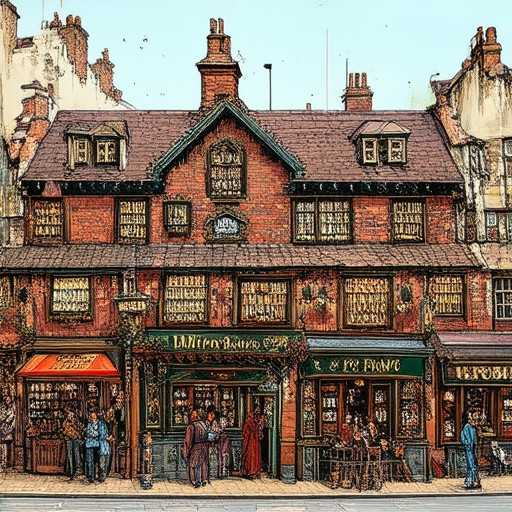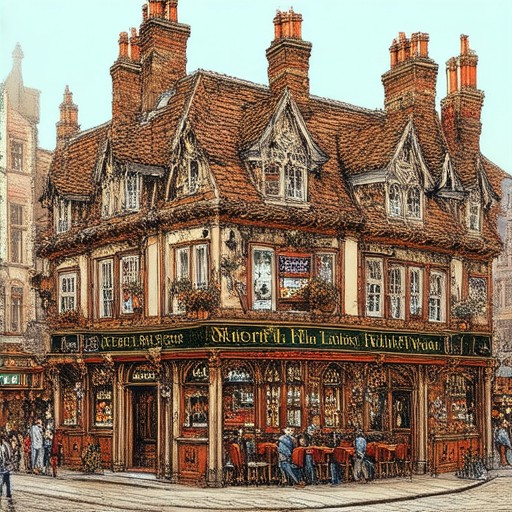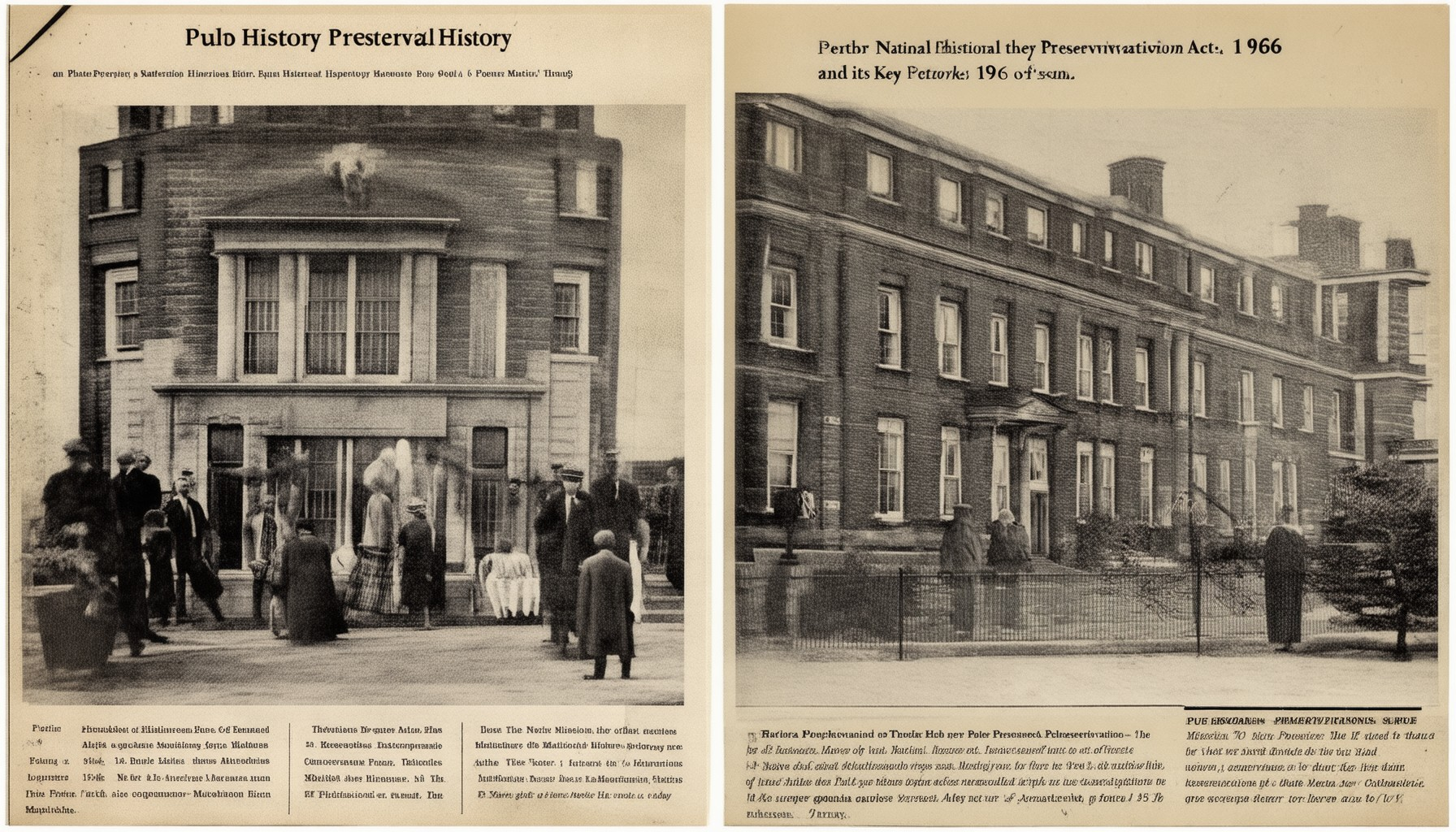Pubs have long been more than just places to gather over a drink; they are cultural landmarks, historical sites, and social hubs that reflect the identity of a community. The preservation of pub history is not merely about maintaining buildings but about safeguarding the stories, traditions, and cultural legacy tied to these establishments. This article delves into the importance of pub history preservation, exploring its significance through the lens of the National History Preservation Act of 1966 (16 USC 470). By understanding the provisions of this act and its impact on pub history, we can appreciate how these efforts contribute to protecting our cultural heritage for future generations.

What Does Historic Preservation Entail?
Historic preservation refers to the process of identifying, protecting, and managing cultural heritage assets to ensure their survival for future generations. It encompasses a wide range of activities aimed at preserving the historical integrity of buildings, neighborhoods, artifacts, and other tangible and intangible cultural resources.
Key Aspects of Historic Preservation
- Education and Awareness:** Promoting the importance of preserving history through public programs, tours, and educational materials to foster appreciation and stewardship.
- Documentation:** Creating thorough records of historic properties, including architectural surveys, historical studies, and oral histories to provide context and guide preservation efforts.
- Conservation:** Applying specialized techniques to restore and maintain historic structures, objects, and landscapes while minimizing damage caused by wear, weather, or inappropriate modifications.
- Adaptation:** Modifying historic properties to meet modern needs while retaining their original character and contributing features, ensuring they remain functional and relevant in contemporary society.
- Stewardship:** Encouraging ownership and management of historic sites by individuals, organizations, or governments committed to preserving their cultural value.
The Importance of Historic Preservation
Historic preservation plays a vital role in maintaining community identity, fostering economic development, and enriching cultural experiences. It helps connect people to their past, promoting a sense of belonging and continuity. Preserving historic sites also supports sustainable practices by reusing existing structures, reducing the need for new construction, and conserving resources.
Examples of Successful Preservation Efforts
Many cities and towns have successfully preserved their historic buildings, turning them into community hubs and tourist attractions. For instance, historic districts like Charleston, South Carolina, and Williamsburg, Virginia, have meticulously maintained their colonial-era architecture, attracting visitors worldwide. These efforts not only celebrate history but also contribute to local economies by supporting tourism and small businesses.
Challenges in Historic Preservation
Despite its benefits, historic preservation faces challenges such as limited funding, changing neighborhood demographics, and conflicting views on the importance of preservation versus development. Addressing these issues requires collaboration between stakeholders, including historians, architects, policymakers, and community members, to find balanced solutions that honor the past while accommodating the needs of the present.
Historic preservation is a multifaceted endeavor that touches on cultural, economic, and environmental values. By understanding its complexities and embracing its principles, we can ensure that valuable historical assets are protected and appreciated for generations to come.
The National History Preservation Act of 1966 (16 U.S.C. § 470)
The National History Preservation Act of 1966, officially codified as 16 U.S.C. § 470 , represents a pivotal moment in the United States’ commitment to safeguarding its cultural and historical heritage. Enacted by President Lyndon B. Johnson, this legislation established a comprehensive framework for preserving the nation’s rich history and cultural resources.
Key Provisions of the Act
- National Register of Historic Places: The act created the National Register of Historic Places, a list of districts, sites, buildings, structures, and objects deemed significant for their historical, architectural, archaeological, or cultural value. This register serves as the official list of historic properties recognized by the U.S. government.
- State Historic Preservation Offices: The act authorized the establishment of State Historic Preservation Offices in each of the 50 states. These offices collaborate with the National Park Service to identify, evaluate, and protect historic properties at the state level, ensuring that local history and culture are preserved.
- Advisory Council on Historic Preservation: The act established the Advisory Council on Historic Preservation (ACHP), an independent body charged with advising the Secretary of the Interior on matters related to the preservation of historic properties. The council plays a key role in reviewing federal actions that may affect historic sites.
- Federal Agency Responsibilities: Federal agencies are required to consult with the ACHP whenever they propose actions that may affect historic properties. This includes activities such as construction projects, land management, and infrastructure development.
Significance and Impact
The National History Preservation Act marked a shift in how the U.S. approached historical preservation. By creating mechanisms for identification, protection, and regulation, the act ensured that historic sites would be considered in federal decision-making processes. Over the decades, this has led to the preservation of countless landmarks and cultural assets.
As of today, the National Register of Historic Places contains over 1.4 million entries, representing a diverse array of America’s history. The act has also fostered partnerships between federal, state, and local governments, as well as private organizations, in the effort to preserve cultural heritage.
Legacy
The National History Preservation Act of 1966 remains a cornerstone of U.S. historical preservation efforts. Its implementation has not only protected iconic sites like battlefields, lighthouses, and historic neighborhoods but also inspired similar initiatives worldwide. By ensuring that the past is accessible and meaningful to future generations, the act continues to fulfill its original vision of preserving America’s story for generations to come.

What is the National History Preservation Act law?
The National History Preservation Act, officially known as the National Historic Preservation Act of 1966, is a United States federal law that establishes a national program for preserving historic properties. Its primary goal is to identify, protect, and celebrate significant historical, cultural, and natural resources across the country.
Key Provisions of the Act:
- Establishment of the National Register : The act creates a national register of historic places, recognizing properties deemed significant based on their historical, architectural, or cultural value.
- Landmark Designation : It authorizes the designation of individual properties as National Historic Landmarks, which are among the most important contributors to our nation’s heritage.
- Preservation Programs : The act promotes preservation through funding, technical assistance, and education programs, encouraging states and local governments to implement their own preservation initiatives.
- Cooperative Agreements : The law fosters partnerships between the federal government and state and local entities to manage and protect historic resources effectively.
- Advisory Board : An advisory board is established to review nominations for the National Register and provide recommendations on preservation matters.
This legislation has played a crucial role in safeguarding America’s cultural legacy, ensuring that future generations can connect with our past through these protected sites and resources.

What is Section 101 of the National History Preservation Act?
Section 101 of the National History Preservation Act establishes the National Register of Historic Places, which serves as the nation’s official list of historic properties.
This section outlines the criteria for determining eligibility of properties for inclusion in the National Register. Properties must demonstrate significance in areas such as history, architecture, culture, or science.
Section 101 also describes the process for nominating properties to the register, including the required forms and submission procedures. It assigns responsibilities to the Secretary of the Interior to evaluate nominations and maintain the register.
The section emphasizes public access to the National Register, ensuring that the information is available for educational and research purposes. It may also address updates and additions to the register based on evolving criteria and new discoveries.
Overall, Section 101 plays a crucial role in preserving America’s historical and cultural heritage by establishing clear guidelines and responsibilities for the National Register of Historic Places.
Section 402 of the National History Preservation Act
The National History Preservation Act includes several provisions aimed at protecting and preserving historical properties. One of the most notable sections is Section 402, which focuses on international cooperation and cultural heritage.
- International Cooperation: Section 402 allows foreign nations to determine what types of properties are relevant to their history and cultural heritage. This provision ensures that international considerations are taken into account when designating properties for preservation.
- State Historic Preservation Officers: The section also empowers state historic preservation officers to work closely with federal agencies, ensuring that preservation efforts align with broader national goals. These officers play a crucial role in identifying and managing properties that contribute to the nation’s historical narrative.
- Public Access and Education: Section 402 emphasizes the importance of making historical information accessible to the public. It encourages the creation of educational programs and resources to raise awareness about the significance of preserved properties.
This provision underscores the act’s commitment to preserving history in a way that respects diverse cultural perspectives while maintaining the integrity of historical sites and structures.

Section 112 of the National History Preservation Act
The National Historic Preservation Act (NHPA) established Section 112 to outline professional qualification standards for individuals involved in the preservation of historic properties. This section mandates that federal agencies ensure all actions taken by their employees or contractors meet these professional standards as determined by the Secretary of the Interior.
- Section 112 requires federal agencies to establish and maintain professional qualifications for those involved in historic preservation projects.
- These qualifications must align with the standards set by the Secretary of the Interior to ensure consistency and quality in historical preservation efforts.
- Agencies are responsible for verifying that employees and contractors adhere to these professional standards during the execution of any preservation-related activities.
- The primary goal is to protect significant historical resources through the application of professional expertise and adherence to established guidelines.
In summary, Section 112 ensures that the preservation of historic properties is carried out by qualified professionals, maintaining the integrity and authenticity of these sites for future generations.




0 Comments